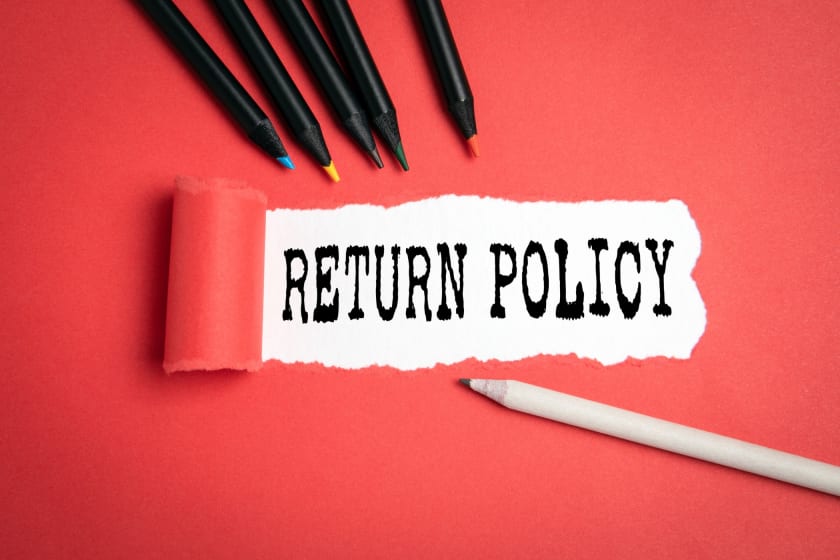3 Things To Consider Before Creating Returns Policy For Fashion Brands



People are generally afraid to make purchases online, resulting in low conversion rates and sales. Return policy for e-commerce companies has been shown to improve the number of customers who purchase after visiting your site.
Customers may be dissatisfied with their orders for a variety of reasons. It could arrive damaged, be the wrong size, or fall short of their expectations. They have the option of requesting a refund or a replacement.
Benefits of Return and Refund Policies
Without a structure in place to handle these demands, they might become overwhelming. Consider how much time it will take to respond to customer support communications, as well as how much money your company will have to spend to replace the returned product. Thankfully, the answer is straightforward.
By establishing and displaying a proper Return and Refund Policy for your website, you can make returns and exchanges less of a hassle. Furthermore, you can help enhance customer loyalty while also potentially generating new revenue. How much money you'll have to spend after Black Friday or Christmas!
In the world of e-commerce, there is no such thing as a standard return rate. Return policy and rates for e-Commerce products vary substantially depending on the product type. There are no two industries that are alike.
3 things to consider before creating return policy for fashion brands
Remember that people aren't interested in reading long, dull legal documents on the internet. It is, nonetheless, critical to provide all necessary information. It's a good idea to break down your Return and Refund Policy into manageable chunks. This will make the document easier to read, assist customers in finding what they require, and provide legal protection for you.
Keep your policy's language simple

Here's a basic idea to remember before we go into what you should include in your Returns and or Refund Policy:
- Write in the same tone as you talk (normal, flowing language and not legalese)
- Don't act like you're a lawyer, if you aren't.
- Even if you engage a lawyer, meet with them and have them draft legally binding language that your customers will comprehend. This will give your Return & Refund Policy a personality.
As long as the text is clear, succinct, and not susceptible to interpretation, your Return and Refund Policy should be fine.
Set a time limit for returns
- An important feature to add to your Return Policy is letting your customers know how much time they have to return goods. Take note of how Single Heater mentions that buyers will only receive in-store credit if they return items after 30 days.
- The free Returns portion on the Solo Stove Shipping and Returns page is highlighted, with 30 days for returns underlined. Regardless of the time range you set, it's critical to make sure you truly have one. You don't want customers returning items or requesting refunds months or years after they were purchased.
Define the circumstances in which you will accept returns

- Accepting a return and issuing a refund may be appropriate if your consumer is instantly unsatisfied with a purchase or if the product isn't performing properly. It's a different story when the buyer uses, damages, or modifies the goods over a longer length of time.
- As a result, while developing your Return and Refund Policy, make sure to include a section that outlines the criteria under which you'll accept returns and issue refunds.
- For example, Burrow states that if returns are not in their original packaging, buyers will be charged a 20% service fee.
- If you don't include such information, your consumers may attempt to return whatever they purchased in a condition that prevents resale. You'd have to take a loss in that instance.
Conclusion
To be concluded, a Return Policy is perhaps the most viewed part on an e-Commerce store's website. This Policy serves as a means to not only clarify your refund process and conditions but also to generate a positive first impression.
Give it your best shot to come up with a strategy. You can come up with new ideas, conduct research, write drafts, and seek input. Also, write a list of your objectives before you begin. Finally, apply everything you've learned here just to help your organisation develop its return policy. A template might also be useful in guiding you through the procedure.
Fashinza is a B2B garment production platform. We connect garment makers with suppliers to help them produce their collections. We handle the entire production process, from design to delivery; our partners must place the order. Our platform enables businesses to place production orders for their collections and have them delivered, as well as track, communicate, and pay for them along the way. For branded businesses, we make the customization process more transparent, quick, and dependable. Get in touch with us right away if you want to learn more!



















